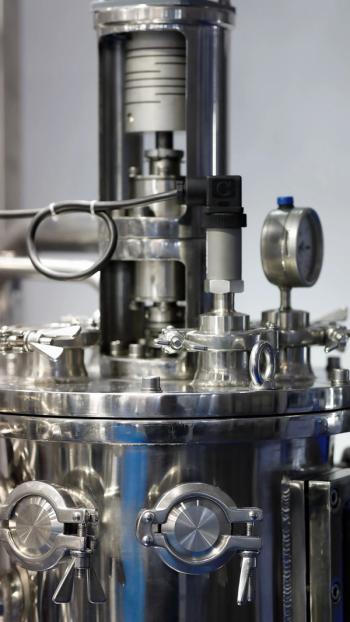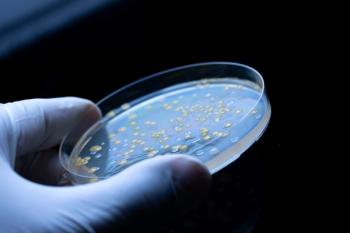
- Pharmaceutical Technology-03-02-2021
- Volume 45
- Issue 3
Using Modified QbD to Develop a Novel Pediatric Formulation of Ezogabine
The epilepsy treatment, Potiga, has been used off-label to treat specific types of epilepsy in some children. However, it has never been formally evaluated in pediatric clinical trials. Using a modified QbD approach, the authors have developed a granular formulation suitable for use in clinical trials involving infants and children.
An adult tablet formulation of ezogabine (retigabine) (i.e., Potiga [also known as Trobalt]) was developed and marketed by GlaxoSmithKline (GSK), as an adjunctive treatment for focal-onset epilepsy in adults. Ezogabine is a potassium channel opener and primarily works by activating the voltage-gated potassium channels in the brain. Ezogabine was shown to be an effective treatment for many patients, however; under certain conditions, it could generate cyclized dimers, some of which have been implicated in pigmentation abnormalities in a subset of patients. Even though these abnormalities were reversible and had no toxic effects, they may have played a part in the decision to withdraw the drug from the global market in 2017.
Potiga had never been studied in a formal clinical trial in young children, but crushed and/or compounded Potiga tablets have been used, off-label, to treat children affected by developmental and epileptic encephalopathy, often with favorable outcomes. The efficacy of this off-label treatment has highlighted a need for clinical testing of ezogabine in the pediatric population. The first step is developing a suitable pediatric formulation of ezogabine (XEN496). A formulation has been developed that is compatible with a range of food matrices, chemically stable, bioequivalent to Potiga in a rat model, compatible with feeding bottle plastics, and has a pleasant taste and mouth feel.
The authors have developed a granular formulation of ezogabine, XEN496 (1–6), suitable for administration to children, including newborns. They used a modified quality-by-design (QbD) approach, as well as a risk-based matrix, to guide development of various prototypes of this Biopharmaceutical Classification System (BCS) Class 2 drug.
First, they established excipient compatibility for ezogabine through an accelerated-condition stability study of binary mixtures of ezogabine and excipients at40 °C and 75% relative humidity. Lead blends within the compatibility space were then designed and their in-vitro dissolution profiles determined. Blends with the most promising dissolution profiles were then dry granulated and re-tested for dissolution prior to stability assessment.
The authors also assessed the impact of drug loading on dissolution performance, along with the potential for non-specific binding to occur with common plastics, such as those used in feeding bottles and nasogastric (NG) feeding tubes. Rat pharmacokinetic (PK) studies were then performed in order to confirm the candidate formulation’s biopharmaceutical performance in vivo, after which it was evaluated for taste/mouth feel and placed on long-term stability studies.
This article describes the overall process taken to design and test prototype pediatric formulations of ezogabine, which led to the identification of XEN496. Data so far suggest that granules containing ezogabine show rapid dissolution, good polymer compatibility and stability, suitable particle size distribution, and ease of dosing on a body weight basis, without requiring extemporaneous compounding. In addition, the final product shows a neutral taste profile, which could potentially enhance both patient and caregiver convenience and patient compliance.
Materials and methods
Ezogabine was synthesized by a qualified good manufacturing practice (GMP) facility and re-crystallized to a chemical purity of 99.88% a/a. The crystalline form was determined to be Form A (i.e., the same form that had previously been used in the manufacture of Potiga) (7). A number of excipients were then selected for evaluation: Hydroxypropyl methylcellulose (Dow, Midland, MI);Starch 1500 (Colorcon, Stoughton, WI), Butylated hydroxytoluene (BHT) (Spectrum Labs, New Brunswick, NJ); Microcrystalline cellulose (FMC, Philadelphia, PA); and Copovidione (Ashland, Mill Creek, WA).To determine the bioequivalence (BE) of the new formulation, male Sprague-Dawley rats were used for pharmacokinetic (PK) evaluation of XEN496 and Potiga.
High-pressure liquid chromatography (HPLC) chemical purity. Analysis was performed using an HPLC device (Shimadzu LC-20ADXR)equipped with an auto-sampler and a 150 x 4.6-mm, 2.7-µm column (Advanced Materials Technology Halo C18). The sample was analyzed using a gradient method with 0.1% H3PO4 in water v/v as mobile phase A and acetonitrile as mobile phase B. The run time was 28 minutes, and the column temperature was 30 °C with an injection volume of 10 µL per sample and a 1 mL/min flow rate.
Analyte detection was carried out by UV analysis at 254 nm with a bandwidth of 4 nm. This method was developed and fully validated for use with ezogabine and its formulated products. Using this method, the parent peak for ezogabine was well resolved. However, the dimers, although observed, were not fully resolved and were (along with certain other impurities) deemed to be related substances for this product.
Excipient compatibility. The excipient compatibility screen was performed with samples consisting of ezogabine mechanically admixed with excipients in proportions typically employed in solid oral dosage products. Samples were stored at 40 °C and 75% relative humidity for four weeks before being analyzed by HPLC for changes in total related substances (TRS).
Formulation development. The excipient compatibility data were used to design a series of prototype formulations prepared via dry granulation to create immediate release (IR) dosage forms. Each of these prototypes consisted of a combination of ezogabine, binders, fillers, antioxidants, and disintegrants in ratios that aimed to promote an optimal release profile of ezogabine along with a minimum degree of degradation caused by interactions with the excipients.
Dissolution. Dissolution testing was performed using a dissolution testing system (Agilent 708-DS) with 0.1 M HCl as the dissolution medium as n=6 samples at 37 °C ± 0.5 °C. The dissolution equipment was set up as per United States Pharmacopeia (USP) <711> as Apparatus 2 (paddles) with a paddle speed of 50 rpm and sampling points at 5, 10, 15, 30, 45, and 60 minutes, after which time the paddle speed was increased to 200 rpm.
The last sampling time point was taken at 75 min. At each time point, 1 mL of the media was sampled, filtered using a 0.45-µm polypropylene filter and analyzed by HPLC using a HPLC (Shimadzu LC-20ADXR) equipped with an auto-sampler and a 150 x 4.6 mm, 2.7-µm column (Advanced Materials Technology Halo C18). The sample analysis was performed using a gradient method with 0.1% formic acid in water v/v as mobile phase A and 0.1% formic acid in acetonitrile v/v as mobile phase B. The run time was 28 minutes and the column temperature was 37 °C with an injection volume of 10 µL per sample and a 1 mL/min flow rate. Ezogabine detection was carried out by UV analysis at 254 nm with a 4 nm bandwidth.
Particle size distribution (PSD). A PSD analyzer (Malvern Mastersizer 3000) equipped with a micro tray accessory (Malvern Aero S) was used for dry powder dispersion analysis. The sample was analyzed using 0.5 bar pressure with a feed rate of 60%, which gave a laser obscuration of 0.14% over a 30 second measurement time. Data analysis was performed using Mie theory (i.e., based on the scattering of electromagnetic waves). No particle size data were gathered for the majority of the formulations prepared, because dissolution was the key parameter for this product. Additional work is planned in the future, to formally explore the relationship between particle size and biopharmaceutical performance for XEN496 as this product progresses through development.
Bioequivalence (BE) study. Male Sprague-Dawley rats (7–8 weeks old, N = 6/group) were used for BE evaluation. Rats were dosed at 10 mg/kg via oral gavage; blood samples were collected via jugular vein at specific time points: 0.25, 0.5, 1, 2, 4, 8, and 24 hours, and processed to plasma by centrifugation at ~4 °C and 3200 g for 10 min within 30 min of collection, and kept frozen at -70 °C – 10°C. The samples were then analyzed for ezogabine levels using a validated method combining liquid chromatography with tandem mass spectrometry. Plasma concentration-time data were analyzed via a non-compartmental model using Phoenix WinNonlin 6.3 software (Pharsight Corporation).
Taste testing. A taste test was performed on the lead prototype formulation (Blend B or XEN496) of the granulated material. Two healthy adult human subjects each took a sub-therapeutic dose of XEN496 in a taste test designed to ensure that the formulation had a neutral character and to determine its mouth feel.
Non-specific binding. Ezogabine non-specific binding to glass, along with three of the most common materials used in feeding bottles and NG tubes (polyether sulfone, polyphenyl sulfone and polypropylene), was tested by preparing a stock solution of the API in purified water at a concentration of 0.025 mg/mL and transferring aliquots to feeding bottles made of the different materials. The bottles were hand shaken for one minute before 1-mL aliquots were tested by HPLC and the amount of material recovered calculated.
Granulation. Samples were blended using a blender (NanTong Beite Pharmaceutical Machinery Co., Ltd. HTD-200), then processed in a roller compactor (Alexanderwerk WP 120), after which granulate was sieved using a vibratory sieve shaker (Fritsch Spartan).
Results
Excipient compatibility. Pediatric formulation development of ezogabine began by testing the stability of the API in the presence of a range of excipients. The goal was a formulation with minimal degradation (i.e., no inherent instability due to unfavorable interactions with inactive ingredients). Excipient compatibility screen results are presented in Table I. This screen was performed with samples consisting of the API mechanically admixed with excipients in proportions typically employed in solid oral dosage products. Many of the samples showed limited or no change in total related substances (TRS) readings after storage at 40 °C and 75% relative humidity for four weeks compared to Day 1. A number of excipients were determined to be potentially suitable for use in the formulation development with ezogabine.
Formulation development. The main prototype formulations prepared for ezogabine at different drug loads are presented in Table II. Based on the projected clinical dosing regimen for various pediatric age ranges, a relatively wide range of drug loads (ranging from 5% to 20% w/w ezogabine) was evaluated by dry granulation to create immediate-release (IR) dosage form prototypes. Each of these prototypes consisted of a combination of the API, binders, fillers, antioxidants, and disintegrants in ratios that aimed to afford an optimal release profile of ezogabine along with a minimum degree of degradation caused by interactions with the excipients (Table II).
Dissolution. To compare formulations based on ezogabine release under simulated gastric conditions, dissolution tests were performed as described. The resulting dissolution profiles are presented in Figure 1, with target criteria being a repeatable dissolution profile with Not Less Than Q+5 (Q=75%) at T=15 minutes for the blend. The optimum blends were designated as the lead (Blend B, XEN496) and back-up (Blend I) formulations for subsequent development. The lead formulation showed in-vitro dissolution profiles (both pre- and post-granulation) consistent with an IR product (e.g., 91.2 ± 1.2% released after 10 minutes, 99.1 ± 1.0% released after 45 minutes).
Analysis of the formulations between 10–60 minutes in the dissolution profile gave no clear impression of function/property relationships for the excipient types used. For example, Starch 1500 is used in these formulations as a binder between 19.99–79.05%. While the formulation with the optimum dissolution rate gave the lowest binder level, other formulations with the same percentage of binder had only moderate dissolution rates, approximating those of formulations with the highest level of binder.
What did seem to have a significant effect was the level of API in the formulation. Typically,formulations with the poorest dissolution have low levels of the API (5%) and the optimum formulations for dissolution have the highest percentage of API (20%). It can therefore be postulated that ezogabine in these granules acts as a disintegrant or dissolution enhancer. At this point, no research has been performed to explain how this mechanism might work. Future studies are planned to elucidate the mechanism underlying this observation.
Stability of selected formulations. The formulations selected for advancement on the basis of their dissolution profiles (Blends B and I) were re-prepared and placed on stability under nitrogen in a potential clinical presentation (i.e., 2 g of XEN496 in 80 x 80-mm sachets made from a polyethylene terephthalate/aluminum/polyethylene [PET/Al/PE] compound film designed for pharmaceutical packaging). The samples were placed under International Council for Harmonization (ICH) accelerated conditions (40 °C / 75% relative humidity) for 36 weeks, with appearance and HPLC purity/related substances evaluated at the time points described in Table III. Ongoing stability assessments have shown that ezogabine is stable in both the lead and back up formulations under ICH accelerated conditions.
Bioequivalence studies. Because the molecule had been previously marketed, it is desirable to show there was no significant change in oral bioavailability and PK profile between the IR Potiga tablet and the current XEN496 granule formulation. To mimic the reported off-label use for pediatric patients, Potiga tablets were crushed before administration, and these crushed tablets were compared head-to-head with the XEN496 granules in a rat PK study.
The crushed Potiga tablets and the XEN496 granules were dosed (10 mg/kg) orally in a rat cross-over PK study. Both formulations were dosed as a suspension at a concentration of 1 mg/mL in 0.02% w/v aqueous carboxymethyl cellulose (CMC); the CMC concentration was selected to match the viscosity of infant formula.
The plasma-concentration curves of the crushed Potiga tablets and XEN496 (Figure 2) are virtually superimposed, indicating that the granule formulation was equivalent to Potiga in terms of biopharmaceutical performance.
This was confirmed through PK analysis, which showed that the geometric mean ratio and its 95% confidence intervals of the PK parameters were within the BE range of 80–125% (Table IV).
Taste testing. Taste is a key parameter in the development of medicines for pediatric populations, particularly infants, who have functioning taste buds on their tongue, tonsils, and at the back of their throats. This makes them more sensitive to bitter and sweet tastes than adults, and they have a strong preference for slightly sweeter flavors (8). Because infants cannot understand or comment on flavors they find unpleasant, they will reject any food which tastes bitter, which, in the case of medicines, may cause an under-dose due to incomplete intake of the administered dose. Pediatric formulations, therefore, must be specifically designed to be neutral or slightly sweet so that they would be accepted by the infants taking the medication.
An informal taste test performed on XEN496 (Blend B), showed it to be slightly sweet with a slightly grainy texture; however, this test used the granulated material, which would be either completely or partially dissolved in the dosing matrices, hence eliminating or mitigating any potential disagreeable mouth feel. It is therefore expected that this product will be accepted by infants when mixed with food.
Particle size. The dissolution profiles indicate that XEN496 will dissolve in 0.1 M HCl; however, the dissolution profile in baby formula could not be determined, because this medium caused interferences in the UV spectra. Because this could, in principle, affect the ability to dose patients effectively and accurately, the particle size distribution of the granules was carefully controlled so that they could pass through the nipple of an infant feeding bottle.
Laser light scattering was used to determine the particle size distribution of the XEN496 granules. It indicated that they would be small enough to pass through the nipple of a standard baby bottle or pediatric NG tube (i.e., with a d10 of 13.4 ± 0.4 µm, a d50 of 41.6 ± 1.6 µm, and a d90 of 153 ± 31 µm). By comparison, typical baby bottle nipple apertures are
>500 µm, and size 4 Fr pediatric NG tubes have a 1330-µm inner diameter. XEN496 is therefore considered compatible with pediatric dosing, including common feeding devices without risking blockages, which may impair administration.
Non-specific binding.The effect of polymer binding on drugs is well-known (9) and can be extremely beneficial when designing a drug delivery system; however, it can also cause undesired effects when polymers trap or adsorb to the API so that it cannot be effectively and/or efficiently absorbed. Because XEN496 is designed to be added to foods, including baby formula, it is important that there be limited polymer binding such that the full API dose can be readily available for absorption in the body.
Glass and three of the most common materials used in feeding bottles and NG tubes (polyether sulfone, polyphenyl sulfone, and polypropylene) were tested for non-specific binding with ezogabine. Analysis of the samples showed 100% recovery from the glass vessel and minimal binding to each of the polymers, with recoveries of 96.9% for polyether sulfone; 96.7% for polyphenyl sulfone; and 96.5% for polypropylene: 96.5%. However, these levels are not expected to affect patient dosing.
Discussion
The challenges inherent in this project were threefold: to develop a stable pediatric formulation of ezogabine; to ensure that the formulation has adequate PK characteristics and preferably is bioequivalent to Potiga; and to make sure that the formulation would meet the stringent requirements of pediatric dosing, yet still facilitate preparation and accurate dosing of the patients without having an unpleasant taste or mouth feel.
The approach used for this work was initially to develop a formulation that would allow the API to be dosed in a manner suitable for the patient population, in a formulation that was stable under accelerated conditions.Once a suitable formulation was prepared, its properties were controlled through particle engineering activities such as micronization and encapsulation of specific strengths, which can be combined to allow for effective and accurate dosing based on each patient’s weight. The approach used in the development of the formulation has proven to meet all design characteristics established in the initial project plan.
Conclusion
A novel pediatric formulation of ezogabine (XEN496) was successfully developed for use in the pediatric population (through dispersal in breast milk, infant formula, or soft foods) as granules packaged in a way that would allow for highly accurate body weight-based dosing. XEN496 has shown suitable physiochemical properties such as dissolution rate and stability. The rat cross-over PK study with XEN496 and Potiga showed that these formulations of ezogabine were bioequivalent, which makes XEN496 suitable for further clinical development and, potentially, for use in pediatric clinical trials in patients with KNCQ2-DEE. XEN496 has since been manufactured under GMP conditions for Phase I/III clinical studies.
References
1. Medline Plus Website, medlineplus.gov, medlineplus.gov/druginfo/meds/a612028.html.
2. M. Douša et al., J Pharm Biomed Anal. 94, 71-76 (2014).
3. M.R. Groseclose and S. Castellino, Chem. Res. Toxicol., Publication Date (Web): Jan 14, 2019.
4. S.V. Mathias and B.W. Abou-Khalil, Epilepsy Behav Case Rep., (7), 61–63 (2017).
5. DrugBank Website: drugbank.ca, www.drugbank.ca/drugs/DB04953.
6. J.J. Millichap et al., Neurol. Genet. 2:1-5 (October 2016).
7. P. Meisel et al., US Patent 6,538,151; Mar. 25, 2003.
8. G.K. Beauchamp and J.A. Mennella, Digestion, Mar; 83(Suppl 1), 1–6 (2011).
9. W.B. Liechty et al., Annu Rev Chem Biomol, 1, 149-73 (2010).
About the authors
Matthew D. Tandy, PhD,* mtandy@xenon-pharma.com, is associate director of chemistry, manufacturing, and control; Jay A. Cadieux, PhD, is vice-president of product development and operations; and Rostam Namdari, PhD, is senior director of translational drug development, all with Xenon Pharmaceuticals Inc., 200-3650 Gilmore Way, Burnaby, BC, Canada.
*To whom all correspondence should be addressed.
Article details
Submitted: July 2, 2020.
Accepted: September 2, 2020.
Pharmaceutical Technology
Vol. 45, No. 3
March 2021
Pages: 44-49
Citation
When citing this article, please refer to it as: M. Tandy, J. Cadieux, R. Namdari, “Using Modified QbD to Develop a Novel Pediatric Formulation of Ezogabine,” Pharmaceutical Technology 45 (3) 2021.
Articles in this issue
almost 5 years ago
Genetic Vaccine Platforms Demonstrate Their Potentialalmost 5 years ago
Novel Excipients Needed More Than Ever Beforealmost 5 years ago
Reviewing Recent Bioavailability Researchalmost 5 years ago
Digital Tools Enhance Raw Material Traceabilityalmost 5 years ago
Pandemic Spurs Cybersecurity Risks in Laboratoriesalmost 5 years ago
Necessity Drives Just-in-Time Approaches to Clinical Trials Supplyalmost 5 years ago
FDA Documents Achievements and Plans for Futurealmost 5 years ago
Adapting Regulations Post-Brexitalmost 5 years ago
Fighting Through This Slow Season of ChangeNewsletter
Get the essential updates shaping the future of pharma manufacturing and compliance—subscribe today to Pharmaceutical Technology and never miss a breakthrough.




